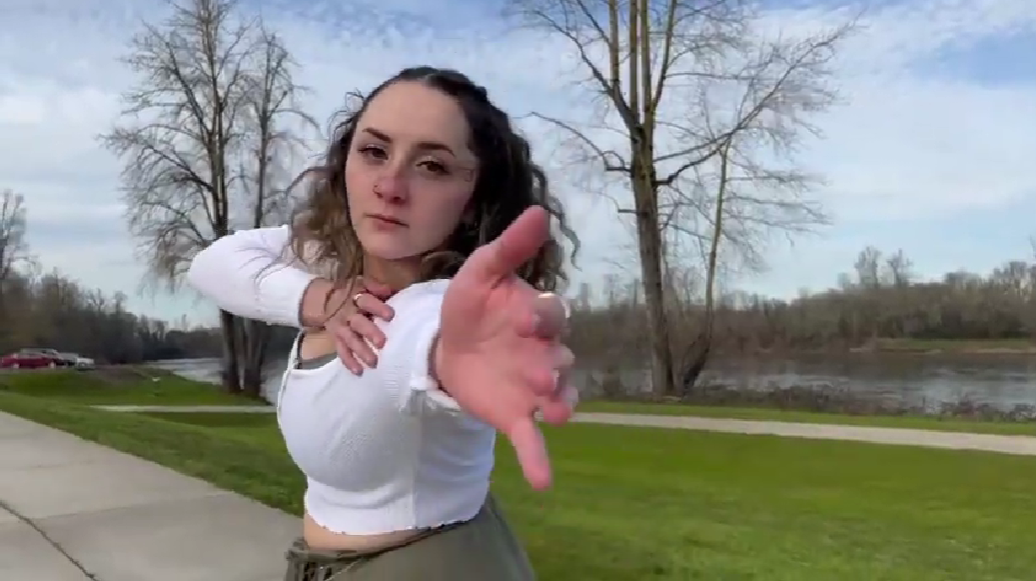Because we love the arts, we’ve invited artists and creatives to participate in a week-long stay and fellowship! Ashleigh Bolling, dancer and choreographer stayed at The Independence Hotel for one week to create a new dance video piece. Ashleigh spent Sunday through Thursday finding music, creating choreography, finding spots to film, and enjoying the vibe in Independence. Then, Friday and Saturday, working with fellow dancer and friend Gabi Hamlin to film, they spent a total of 6 1/2 hours filming the video. Finally, Ashleigh edited, completing this brilliant piece in just one week! The Independence Hotel is honored to the backdrop for this beautiful, expressive, and moving work!
Check out Ashleigh’s work, choreographed and danced by Ashleigh Bolling, filmed by Gabi Hamlin, music by José González (track is Stay Alive)
Interview with Ashleigh:
Independence Hotel (IH): How did you first hear about the Creatives Fellowship program at The Independence?
Ashleigh Bolling (AB): I heard about the Creative Fellowship Program through the General Manager Matt Smith. He had sent out an email to some of the artists that work for The Independence Hotel and I applied through the link from the website.
IH: Can you tell us a little bit about your background?
AB: I am from Pendleton Oregon. I started dancing at Jr Jam Dance Studio, in Pendleton, when I was 5 and followed through until high school graduation. I also danced on my high school dance team Rhythmic Mode and was captain my junior and senior year. After high school, I moved to Monmouth in 2017 to attend Western Oregon University to further my dance education. Last summer I graduated Magna Cum Laude with my Bachelors of Arts in Dance. When I am not dancing I enjoy spending time outside, reading, and trying new things.
IH: How do you approach choreography? Do you tend to start with an idea or a piece of music? Or does the movement come first for you? Is there often something you wish to say, or is it more about feeling? Long story short, can you tell us a little bit about your creative process?
AB: My creative process is pretty structured, I work well with structure and that is what comes naturally to me. I start with the music almost always. Music is what inspires me to move, I love finding the underlying accents and beats to contrast what the most obvious sounds are. Once I find the music, I usually listen to it over and over again while simultaneously picturing movements here and there. After I make the final decision on music I will create a music map with all the accents, beats and sounds I hear to help me know how long of a song I have and how I want the movement to look with the music. After I map out the piece of music, I will make any edits I need. For this particular piece I cut off about 30 seconds of the end of the song because I felt I didn’t need it. Next in my process is actually creating the movement. I like to picture my dance in my mind and write down the ideas that come while listening to the song. Once I have a good chunk, I go through the movement and actually see if it physically flows the way I want. While doing all that I am also thinking of where I want the camera and how I want to capture the movement. I tried hard to write down my inspiration for filming, rather than making a set in stone list of shots. Being structured is helpful to an extent, but I constantly have to stop myself from over-planning. I still have to remind myself to leave room in my brain for creative play. Throughout the week when I found I needed a break I would go for walks to find inspiration for the setting of my shots. I created my rough outlines of a shot list and made some finishing touches and cleaned up the movement the day before filming. Gabi and I spent two days filming this piece and afterwards I spent about two days editing and putting the rest together.
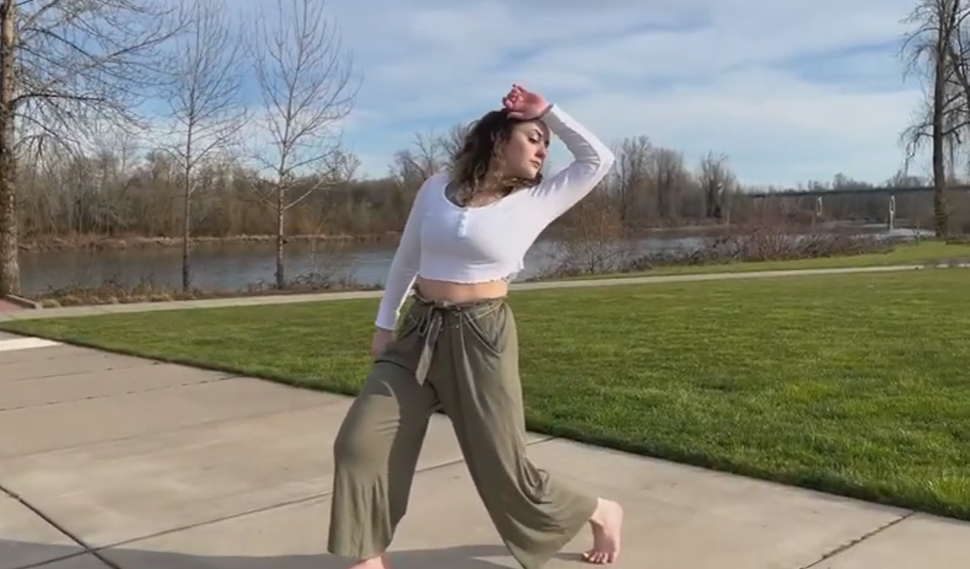
Ashleigh recently earned her degree in Dance from Western Oregon University
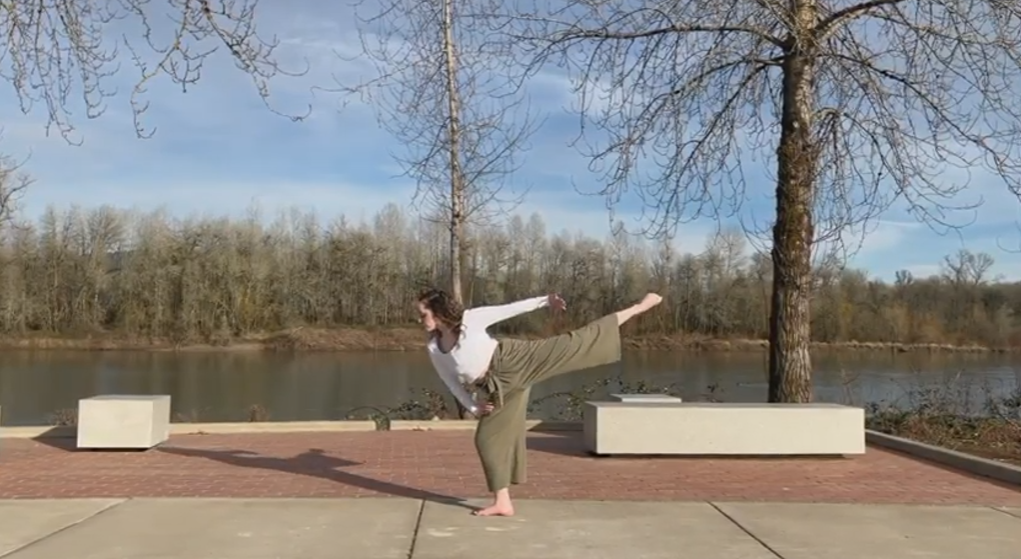
Ashleigh used the park and pathways in front of the hotel for backdrop in her film
IH: What are the pros and cons to working on a dance project solo? How was it having a friend (who is also a dancer) here to film the project? (PS, the cinematography was beautiful!)
AB: This project has been very special for me. It was the first time I created a solo video project on myself. My past experience has been working with a wide range of dancers from one to twenty, so I knew movement wise it wouldn’t be too much of a challenge, but it was new territory for me creating something for myself. The part that most surprised me was the filming process. Gabi Hamlin is a wonderful friend, gifted videographer and dancer, so I knew she was the one to ask to film. I am so grateful she was able to help me with this project. Working one on one to create the video worked out so much differently than working with a group. In some ways it was easier, there was only one person to watch so we knew if one take wasn’t good right away, we didn’t have to sift through the group to look for inconsistencies. The tough part was making sure I could move in all of the outside settings. We did have to change things the day of due to weather but I couldn’t be happier. I think spontaneity helped with our creative processes. I had a printed list of all the places I wanted to shoot at and which sections I would need to perform, but also let Gabi know that I wanted her creative input in the piece. Gabi was great and added so many great ideas to the filming process. This video could not have worked without her.
IH: Was the piece you created during your time in the Fellowship completely choreographed, or did you play around with improv at all?
AB: I had this piece mostly blocked out with choreography. There were a couple of spots I purposefully left blank that we played around with on filming day. I did include a few of the improvisational shots, but most of the piece was planned out. I like to play with choreography repetition and phrases, so that is what I mostly focused on.

H: Merce Cunningham has a quote, “You have to love dancing to stick to it. It gives you nothing back, no manuscripts to store away, no paintings to show on walls and maybe hang in museums, no poems to be printed and sold, nothing but that fleeting moment when you feel alive. It is not for unsteady souls.” How do you think that separates dance from other forms of art, and how do you think that changes (or doesn’t change) when it comes to dance on film?
AB: I love the Merce quote, an absolute icon! I think dance is absolutely something that is an in the moment, ever fleeting feeling that people, or at least I, have trouble even explaining. Of course video dance or just recordings of performances leave us with a memory of what happened, but I think it is unlikely we feel the same emotions watching back compared to actually doing the movement. Seeing my video now, I still feel proud, happy, excited and nervous. But my week spent moving and filming, the emotions I felt as I completed the movement is an unexplained feeling I chase daily. Dance is my way of talking about how I feel without having to actually say words. The act of moving somehow releases those feelings and it is the most glorious thing. Merce is right, I cannot hang that feeling on a wall and feel it as I look back into the past. But I think that is what makes all art special, it’s not all the same and it can be felt, appreciated, and remembered in so many different ways as viewers and as artists.
IH: What is one thing you wish you could change about the dance world, and what is one misconception about dance that you wish more people understood?
AB: One thing I would change about the dance world would be mental health outreach. This job is hard, we choose it because we love it and it is worth the work, but what it is not worth is sacrificing our healthy bodies for a certain image. One misconception I don’t enjoy is people assuming dance is easy. Yes there are easy ways to move, you go to the club and it’s a laid back fun dance party time, but you go to dance class and that’s a whole other world. Professional dancers train just like other athletes. I think a lot of these ideas just come from lack of information about professional dancers, but it can get a bit discouraging when I tell people what I have a degree in and they look at me and ask what I am going to do with my life.
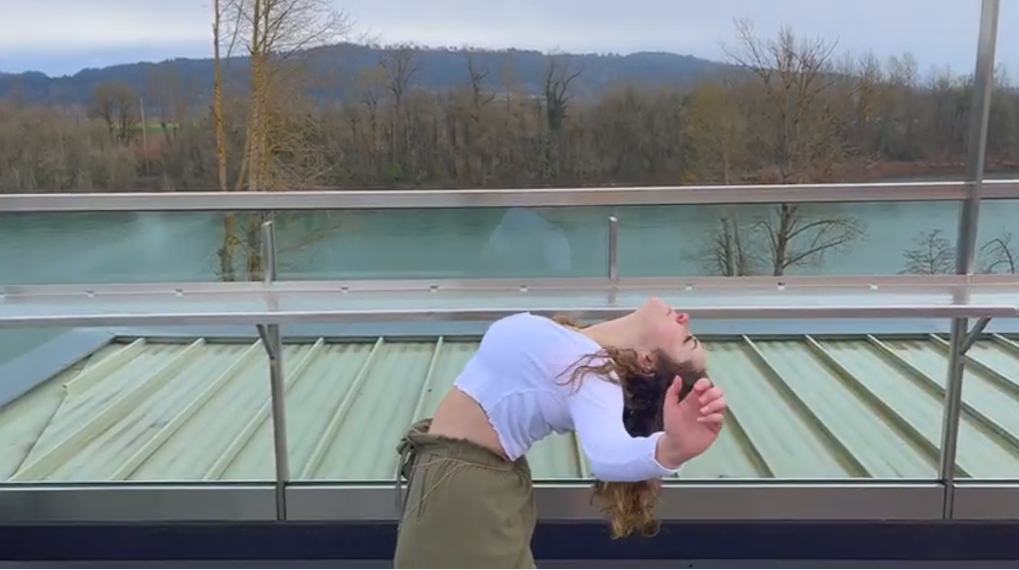
Suspension, one of the qualities in Ashleigh’s choreography. Rooftops are great for suspension vibes!
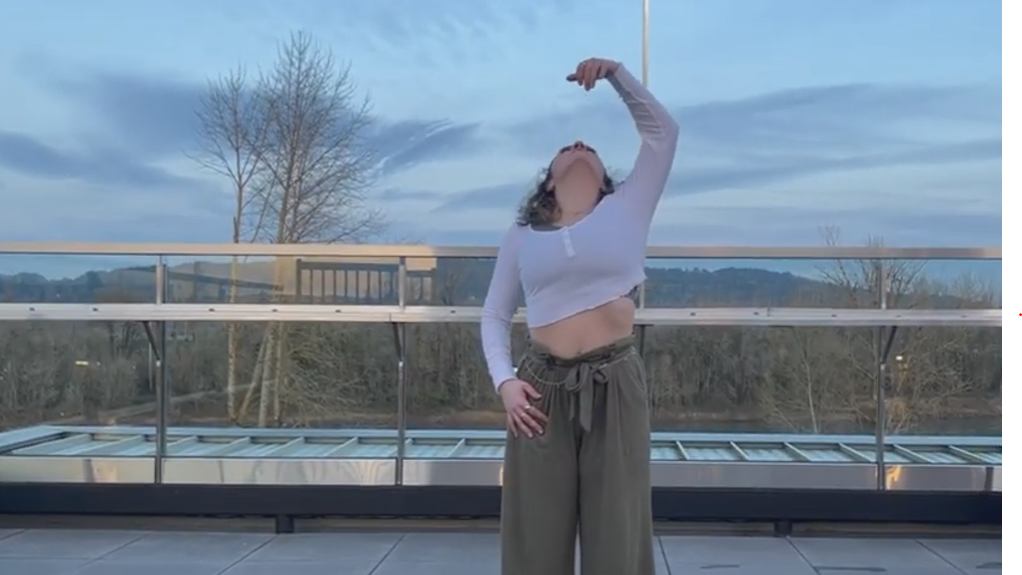
Reaching toward the sky on a beautiful evening, so much encapsulated in one movement!
IH: Who is a dancer/choreographer you look up to?
AB: I look up to so many dancers and choreographers I cannot just pick one, so I made a list:
- Cynthia Gutierrez-Garner (WOU professor/mentor
- Sharon Oberst (WOU Dance Department Head/mentor)
- Darryl Thomas (WOU professor/academic advisor)
- Les Watanabe (WOU professor/mentor)
- Debbie Kishpaugh (Jr Jam Dance Teacher/mentor)
- Meghan Sanett
- Janelle Ginestra
- Jerome Robbins
- Trisha Brown
- Alvin Ailey
IH: If you were to describe your work (or your approach to your work) in three words, what would they be?
AB: Suspension, Repetition and Emotional
IH: How was your time at The Independence?
AB: My time at The Independence was wonderful! Throughout all that work, I somehow still felt like I was on a relaxing vacation. Once a day I would go for a walk or a drive to clear my head, but since I am from the area I already know about the spots I like.
IH: What is your favorite aspect of the hotel?
AB: My favorite aspect of the hotel is the people. The staff is wonderful and does such a good job of making even a coworker feel like a celebrity guest. My favorite part of my stay probably has to be watching the sunrise from the roof and my balcony.
IH: How great that you had the week to film! How much time do you usually hope for when preparing for a performance?
AB: In the past I have spent an average of about three months on a group video project. Taking that process and shortening it to a week was probably the most intimidating part of the whole process. I made the right decision creating a piece for myself, if I would have had to teach anyone the movement the timeline would not have worked. I don’t think I have found my sweet spot for the length of time I prefer yet…. I think three months leaves too much room for hyper-corrections but I wish I could’ve had maybe just another few days or a week to fine-tune some of the things I missed.
IH: Well, we are pretty impressed with what Ashleigh accomplished, a moving and beautiful piece inspired by and in conversation with the setting.
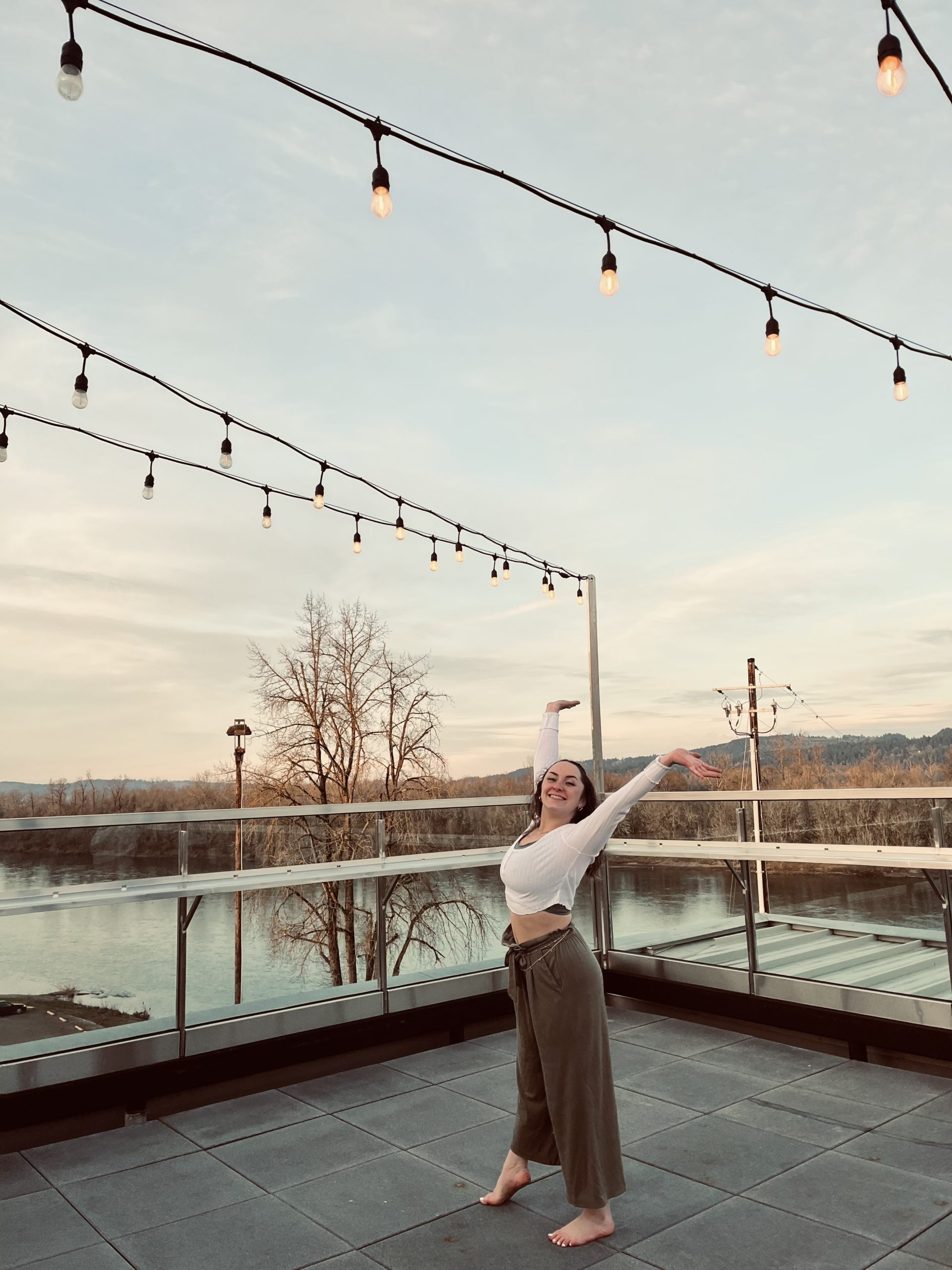
Ashleigh and her friend, a fellow dancer/videographer spent 6.5 hours filming before Ashleigh edited.
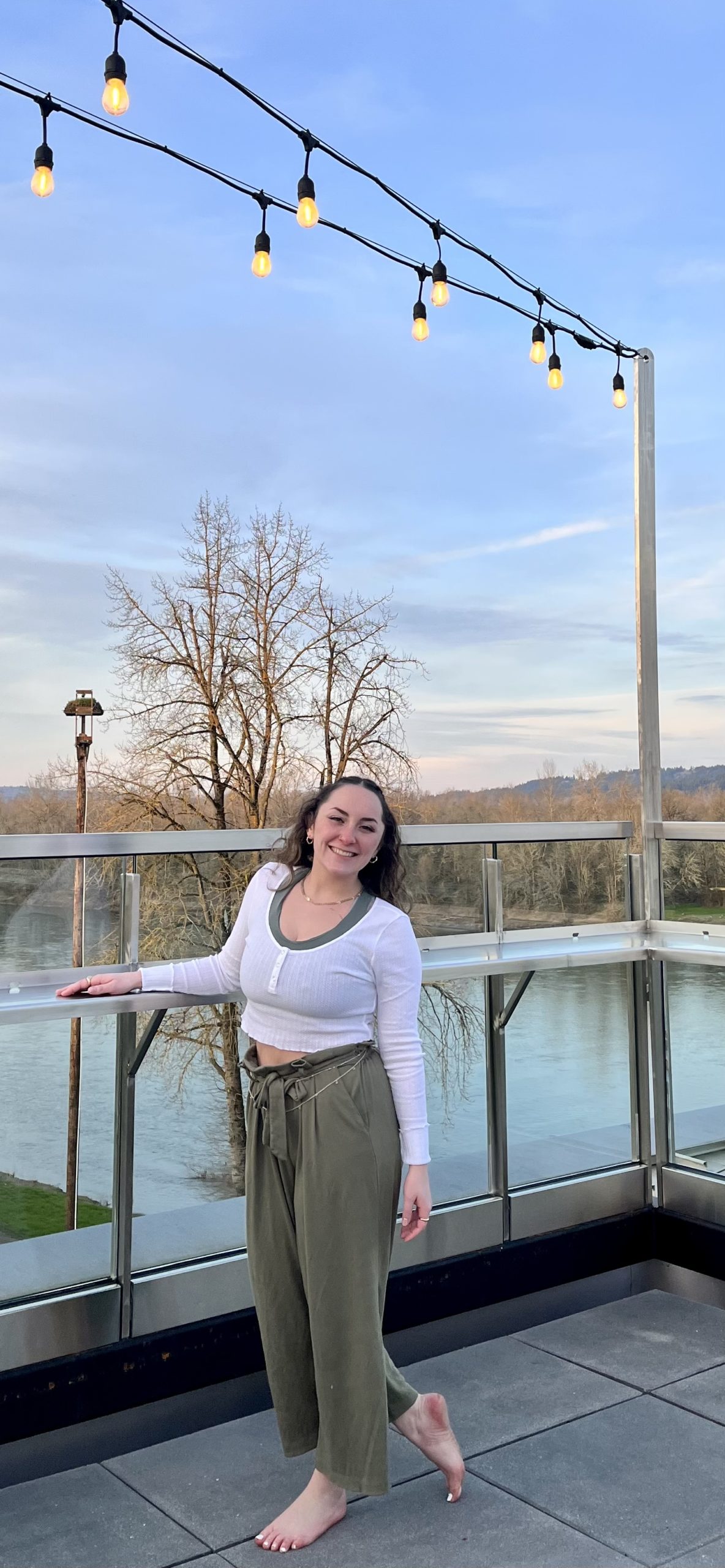
The rooftop is a particularly inspiring place, dancing with a view!
